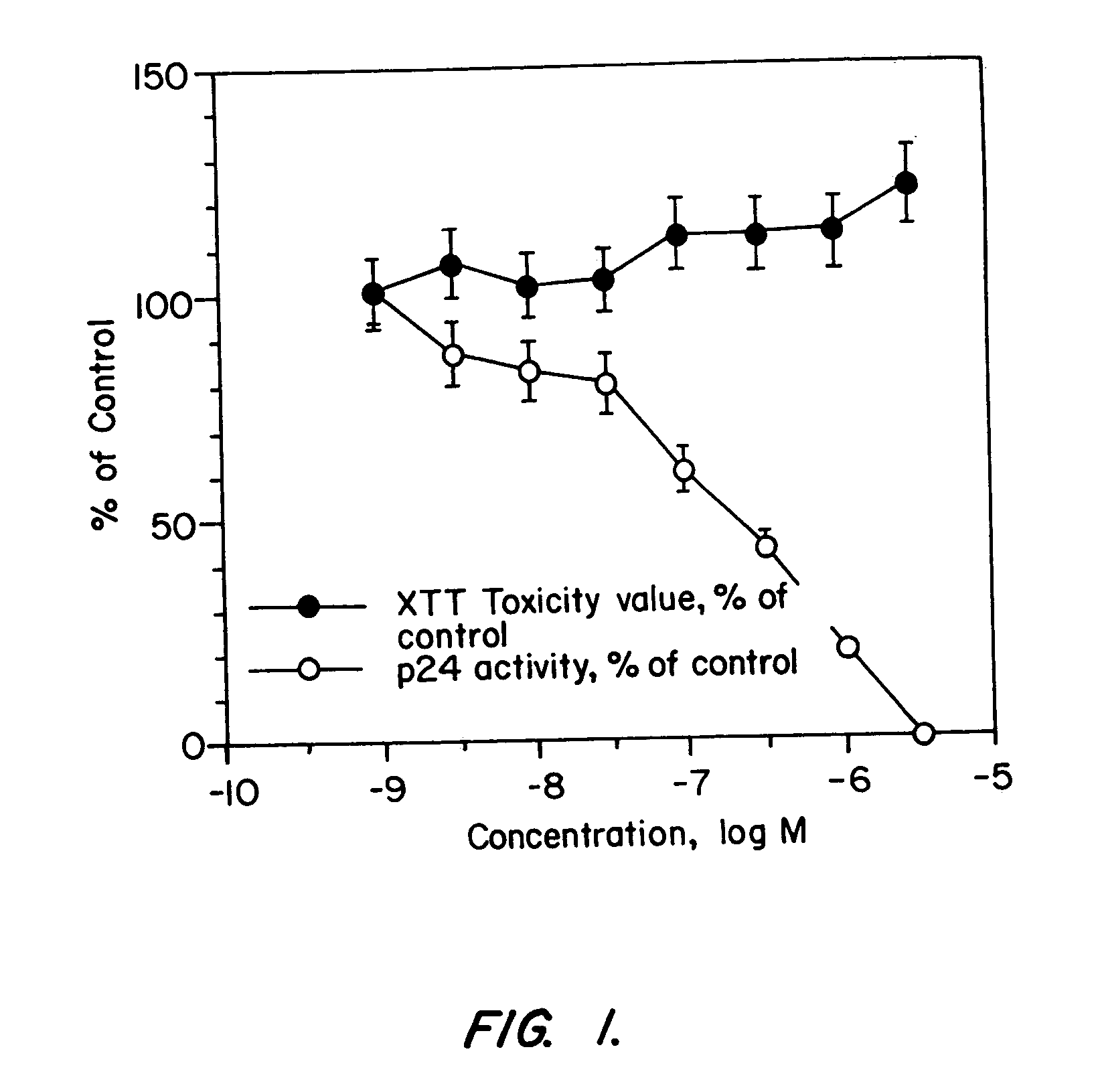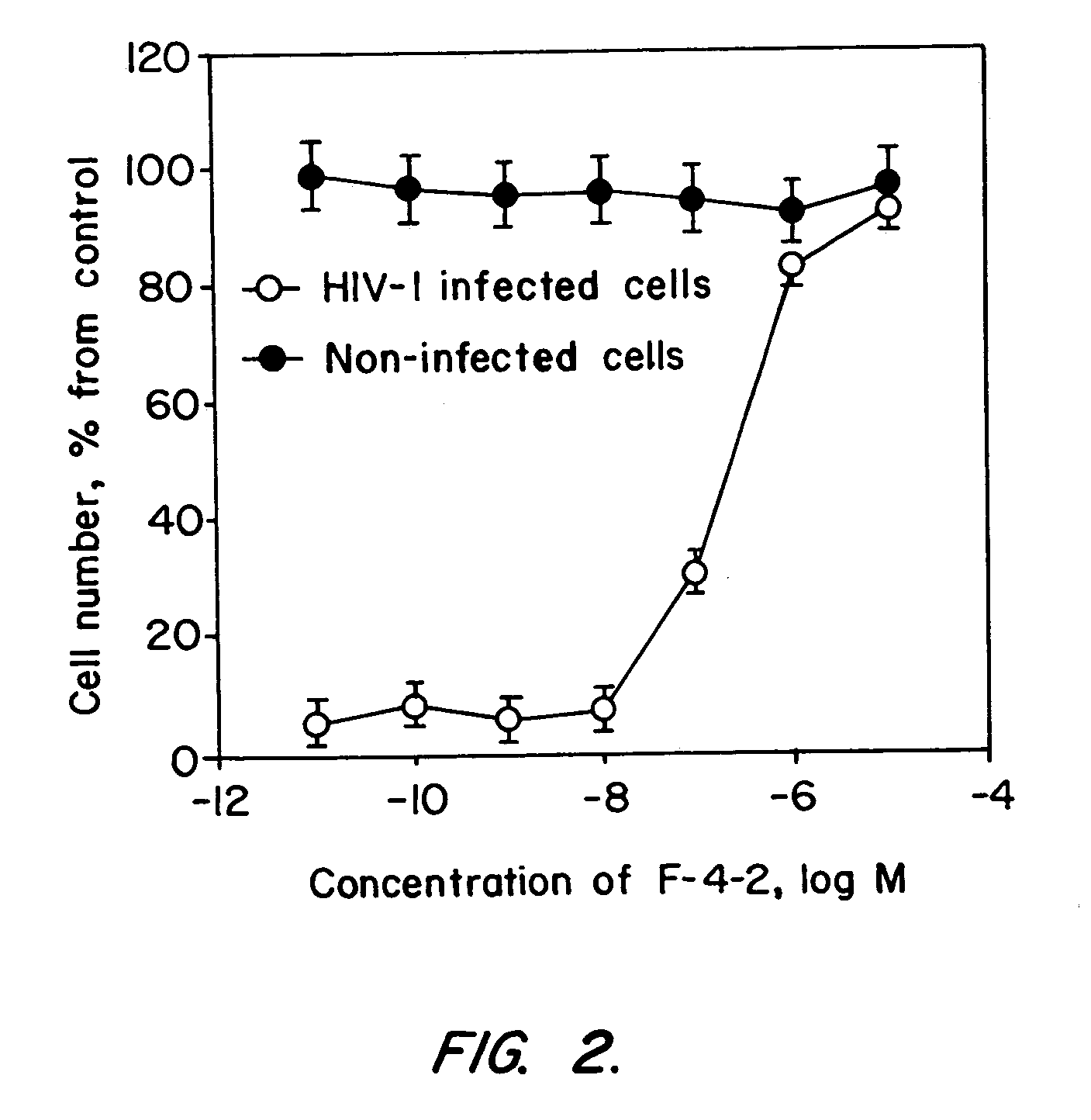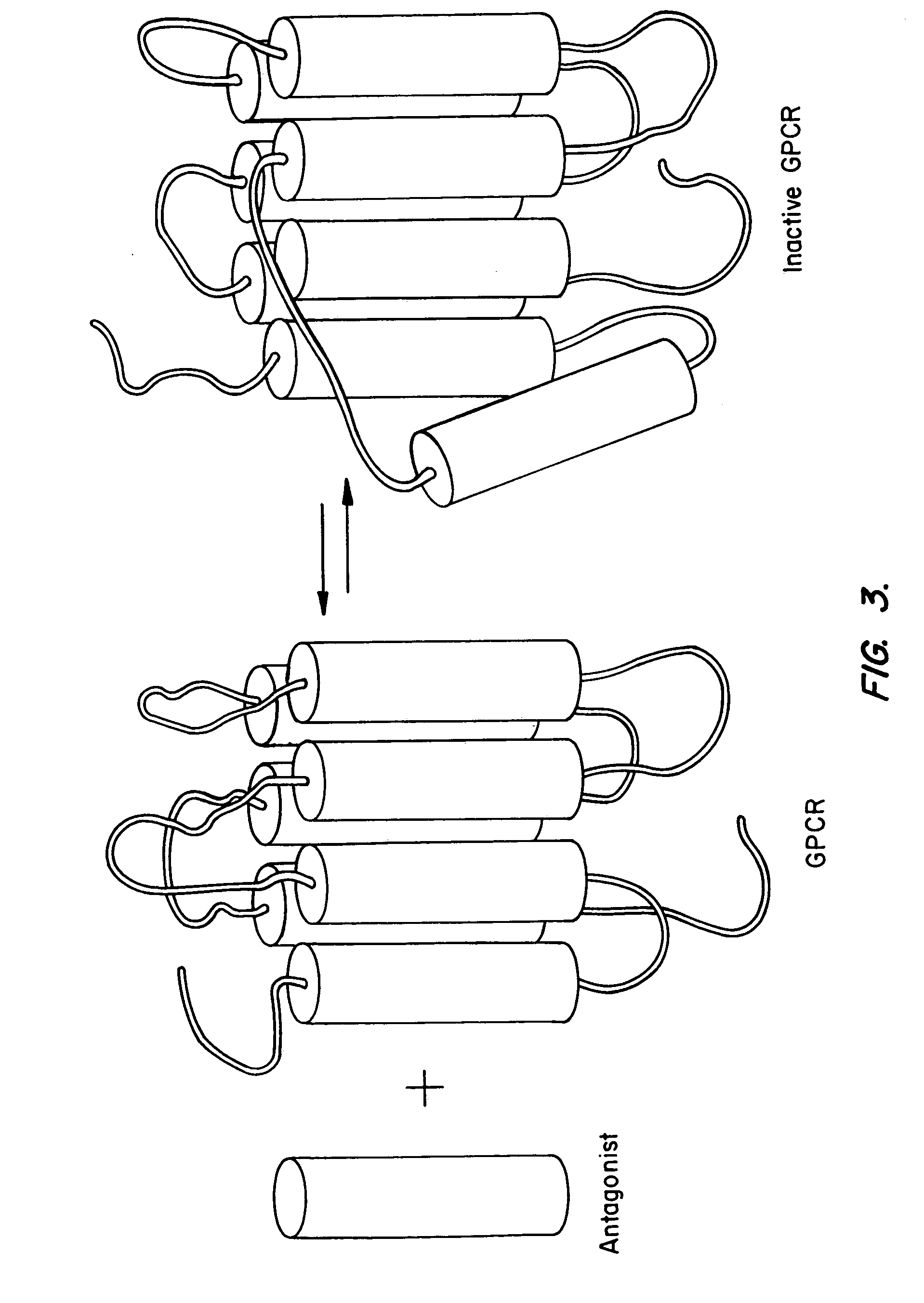G protein-coupled receptor antagonists
- Summary
- Abstract
- Description
- Claims
- Application Information
AI Technical Summary
Benefits of technology
Problems solved by technology
Method used
Image
Examples
example 1
[0206]Example 1 illustrates that peptides derived from transmembrane regions of CXCR4 inhibit CXCR4-mediated calcium fluxes.
[0207]Peptides having the selected sequences were synthesized by a flow-through solid phase peptide synthesis on 432A Applied Biosystems Peptide Synthesizer utilizing Fmoc amino acid derivatives. To overcome the aggregation that frequently occurs during the synthesis of hydrophobic peptides and leads to the blockage of the growing peptide chain, FmocHmb derivatives of Ala, Val and Leu were introduced into the difficult sequences. Charged residues were added to the peptide termini to assure a proper orientation of the peptides during penetration into the cellular membrane, and to improve the solubility of the highly hydrophobic peptides.
[0208]The purity of the peptides was assessed by reverse phase HPLC and the structures were confirmed by matrix-assisted laser-desorption time-of-flight (MALDI-TOF) mass spectrometry (Tarasova et al. (1998), Ad. Exp. Med. Biol., ...
example 2
[0220]Example 2 illustrates that synthetic peptides corresponding to transmembrane domains of CXCR4 inhibit CXCR4-mediated HIV infection.
[0221]CCR5 and CXCR4 are believed to be the main co-receptors for HIVI cell entry (Broder et al., (1997), J. Leukoc. Biol. 62:2029; Doranz et al. (1997) Immunol. Res. 16: 1528; Premack and Schall (1996), Nat. Med. 2:11741178.), although other chemokine receptors appear to mediate infection as well (Michael et al. (1997) Nat. Med. 3(10):11602).
[0222]The ability of synthetic CXCR4-derived peptides of Table 1 to inhibit HIV-1 infection of CEM-SS cells was tested using an LAV strain of the virus that is known to utilize CXCR4 as a co-receptor. Anti-HIV-1 assay. Buckheit et al. (1993) Antiviral Research 21: 247. The CEM-SS cells were maintained in RPMI 1640 medium containing 10% fetal bovine serum. The cells were placed in each well of a 96-well microtiter plate to a density of 5×103 cells per well. The cells were infected with HIV-1 virus at a multipli...
example 3
[0229]Example 3 shows that the peptides of the invention partition to the plasma membrane and other membrane compartments.
[0230]A fluorescent derivative of CXCR4 TM2, rhodamine-F-2, was synthesized by solid-phase synthesis on 432A Applied Biosystems Peptide Synthesizer utilizing Fmoc amino acid derivatives. Rhodamine B (Fluka) was loaded onto the amino acid column of the instrument. The purity of the peptide was assessed by reverse phase HPLC and the structures were confirmed by matrix-assisted laser desorption mass spectrometry.
[0231]A chimeric protein consisting of the CXCR4 and the green fluorescent protein (GFP) was used for studying receptor localization, internalization, and recycling in live cells in real time. This construct was made and stably expressed in HeLa cells as described in Tarasova et al. (1997), J. Biol. Chem. 272: 14817–14824. Fusion of the C terminus of the CXCR4 to the N terminus of the GFP did not appear to alter receptor ligand binding affinity, signal trans...
PUM
| Property | Measurement | Unit |
|---|---|---|
| Fraction | aaaaa | aaaaa |
| Molar density | aaaaa | aaaaa |
| Concentration | aaaaa | aaaaa |
Abstract
Description
Claims
Application Information
 Login to View More
Login to View More - R&D
- Intellectual Property
- Life Sciences
- Materials
- Tech Scout
- Unparalleled Data Quality
- Higher Quality Content
- 60% Fewer Hallucinations
Browse by: Latest US Patents, China's latest patents, Technical Efficacy Thesaurus, Application Domain, Technology Topic, Popular Technical Reports.
© 2025 PatSnap. All rights reserved.Legal|Privacy policy|Modern Slavery Act Transparency Statement|Sitemap|About US| Contact US: help@patsnap.com



